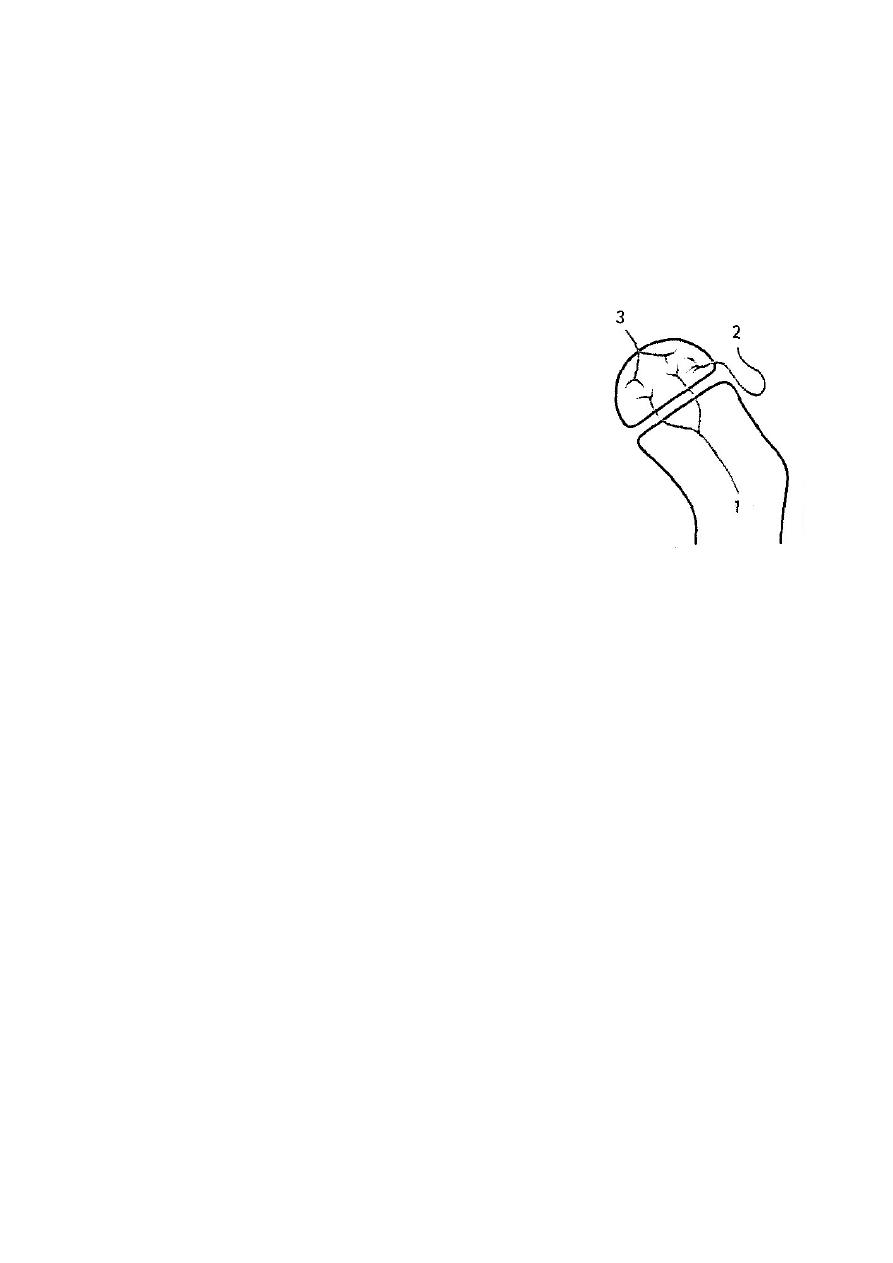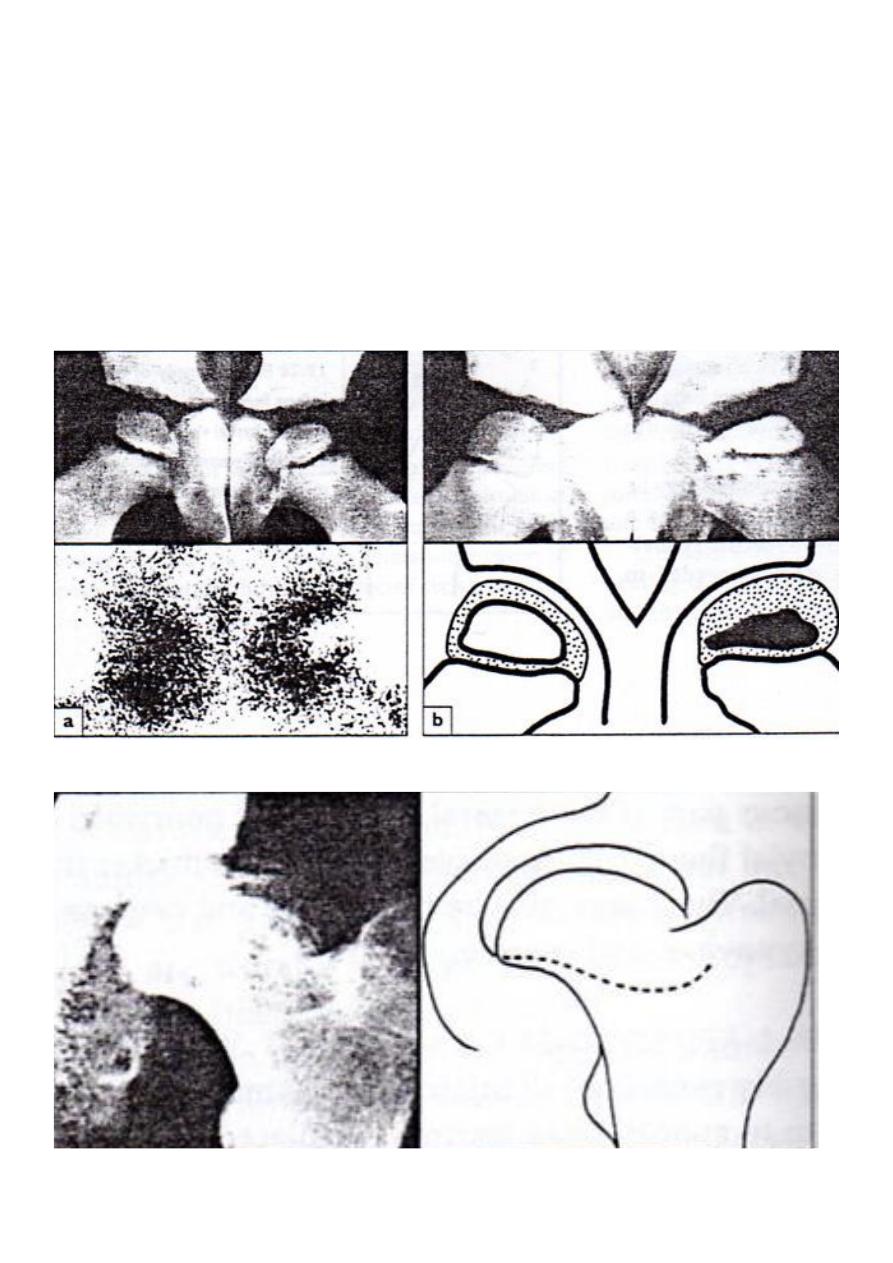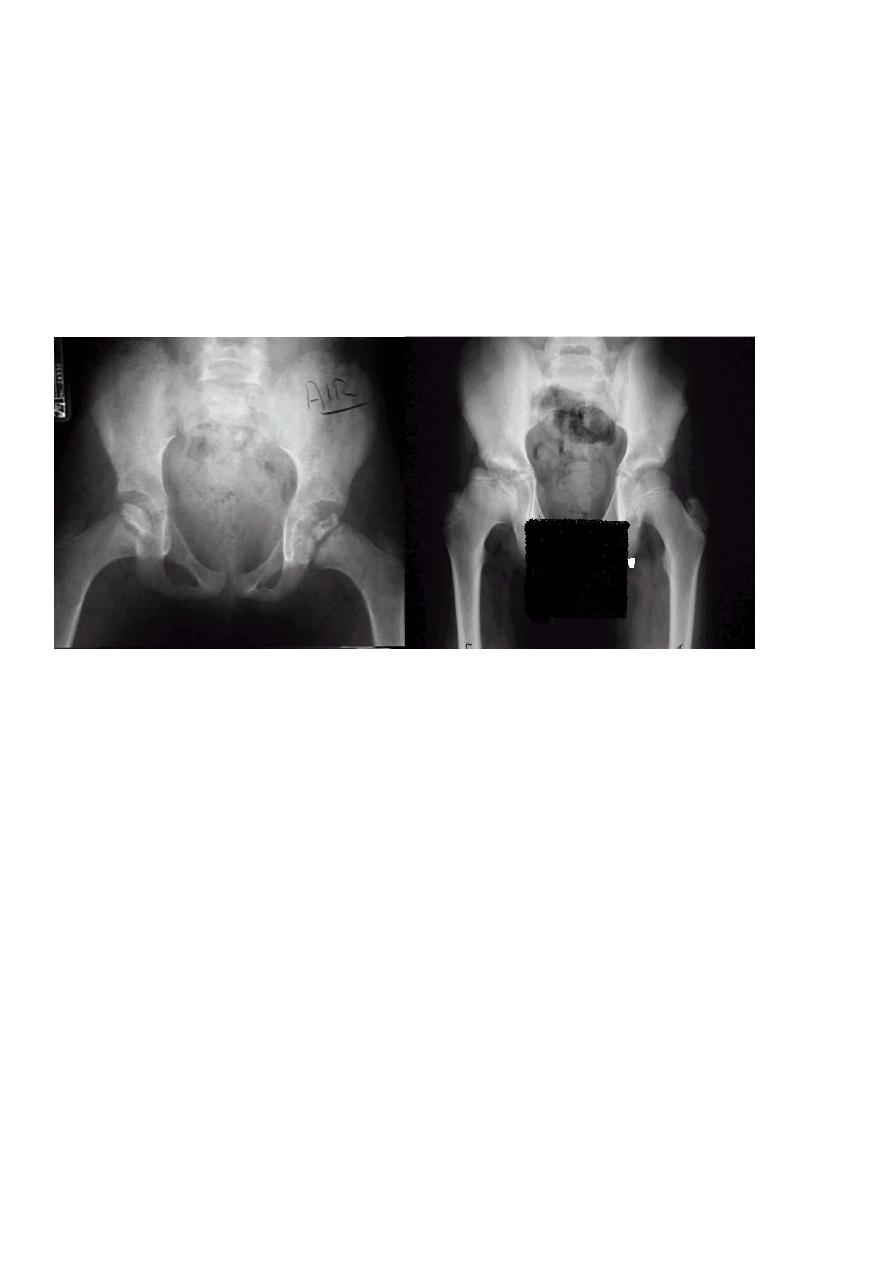
1
Fifth stage
ORTHO
Lec-2
د.يقضان
3/12/2017
IRRITABLE HIP
Introduction :-
Irritable hip is a term referred to transient synovitis of the hip in children; in which
the child complain from pain and limping .
it is the commonest cause of hip pain in children .
Boys affected twice as often as girls (2:1)
Clinically :-
The child is usually between 6-12 years old .
Presentation : pain and limping in otherwise healthy child .
The pain is felt in the groin and in the front of the thigh .
On examination : restriction of all movements with pain .
The symptoms subside spontaneously within 1-2 weeks so it is called transient .
Investigation :-
1- blood investigation : NORMAL .
2- x- ray finding : NORMAL .
3- ultrasound ex. Of hip: MILD EFFUSION
Differential diagnosis of pain and limping in children :-
1- transient synovitis (commonest cause) .
2- Perthes’ disease .
3- pyogenic infection(septic arthritis or osteomyelitis) .
4- T.B synovitis .
5- typhoid or brucillosis affecting the hip .
6- slipped femoral epiphysis .
7- Juvenile chronic arthritis .
Treatment :-
The child otherwise completely healthy .
1- in mild cases : rest in bed at home , analgesic anti inflammatory drugs .
2- in moderate to sever cases admission to the hospital rest in bed , skin traction ,
analgesic anti inflammatory drugs .
Weight bearing not allowed before acute attack is subside (usually take 1-2 weeks).

2
Perthes disease
Introduction :-
It is also called Legg – Calve’- Perthes’ disease .
It is painful disorder of childhood characterized by avascular necrosis of the femoral
head .
It’s incidence is 1 : 10000 child .
More common in boys than in girls (4:1) .
Age incidence usually between 4-8 years
Pathogenesis :-
The precipitating factor of the disease is unknown .
The main step in pathogenesis is ischemia of the femoral
head .
Up to the age of 4 months the femoral head is supplied
by:
1- metaphyseal blood vessels .
2- lateral epiphyseal vessels .
3- vessels in the ligamentum teres .
The metaphyseal blood supply gradually decline until by the age of 4 year it will disappear
The vessels in the legamentum teres develop at the age of 7 years old ; so between the age 4-
7 years the blood supply depend on the lateral vessels which run into the capsule of the joint
make them susceptible to stretching and pressure from an effusion of the joint .
Pathology :-
Pathological process take 2-4 years to complete .
Stage 1.. Ischemia and bone death .
Stage 2.. Revascularization and repair .
Stage 3.. Distortion and remodeling.
Clinical features :-
Typically a boy of 4-8 years complain from pain at the hip region associated with
limping .
The attack take few weeks (more than 2 ) and it may recur intermittently .
The child’s general health is good .
At early stage the joint is irritable(all movements are restricted ) and their extremes are
painful.
In late stages all movements are full apart from limitation in abduction and internal
rotation .

3
X-ray :-
1- at the beginning the x- ray look normal some time we can see asymmetry of the ossific
centers ; bone scan is helpful at this stage (showing the avascular area) .
2- later on the increase density of the ossific nucleus will be clear ; and there is increase
in the joint space .
3- fragmentation of the epiphysis .
4- flattening and lateral displacement of the epiphysis .
5- widening of the metaphysis .
6- in sever and advance cases the head become mushroom shape .

4
Prognostic factors :-
1- age : below 6 years good prognosis .
2- sex : girls carry bad prognosis than boy
3- the greater the involvement of the femoral head the badest is the prognosis .
Criteria of head at risk :-
1- progressive uncovering of the epiphysis
2- calcification of the cartilage lateral to the ossific nucleus .
3- radiolucent area at the lateral edge of the epiphysis .
4- sever metaphyseal resorption
Treatment :-
As long as the head is irritable the child should be kept in bed with skin traction and the hip
is in little flexion and external rotation . Once the irritability is subside which usually take
three weeks then movements is encouraged .
Further treatment :
A- symptomatic treatment :
Include : pain control by simple analgesic and periods of traction and rest .
Regular assessment should be taken every few months i.e. (supervised – neglect)
way.
Sport and heavy activities should be avoided
B – containment :-
It mean taking active step to seat the head of the femur as fully as possible in the acetabular
socket. This achieved by :
A – holding the hip widely abducted in plaster or in removable abduction splint and the
position maintained for at least one year .
B – operation by varus osteotomy of the femur or osteotomy of the innominate bone
SH.J
